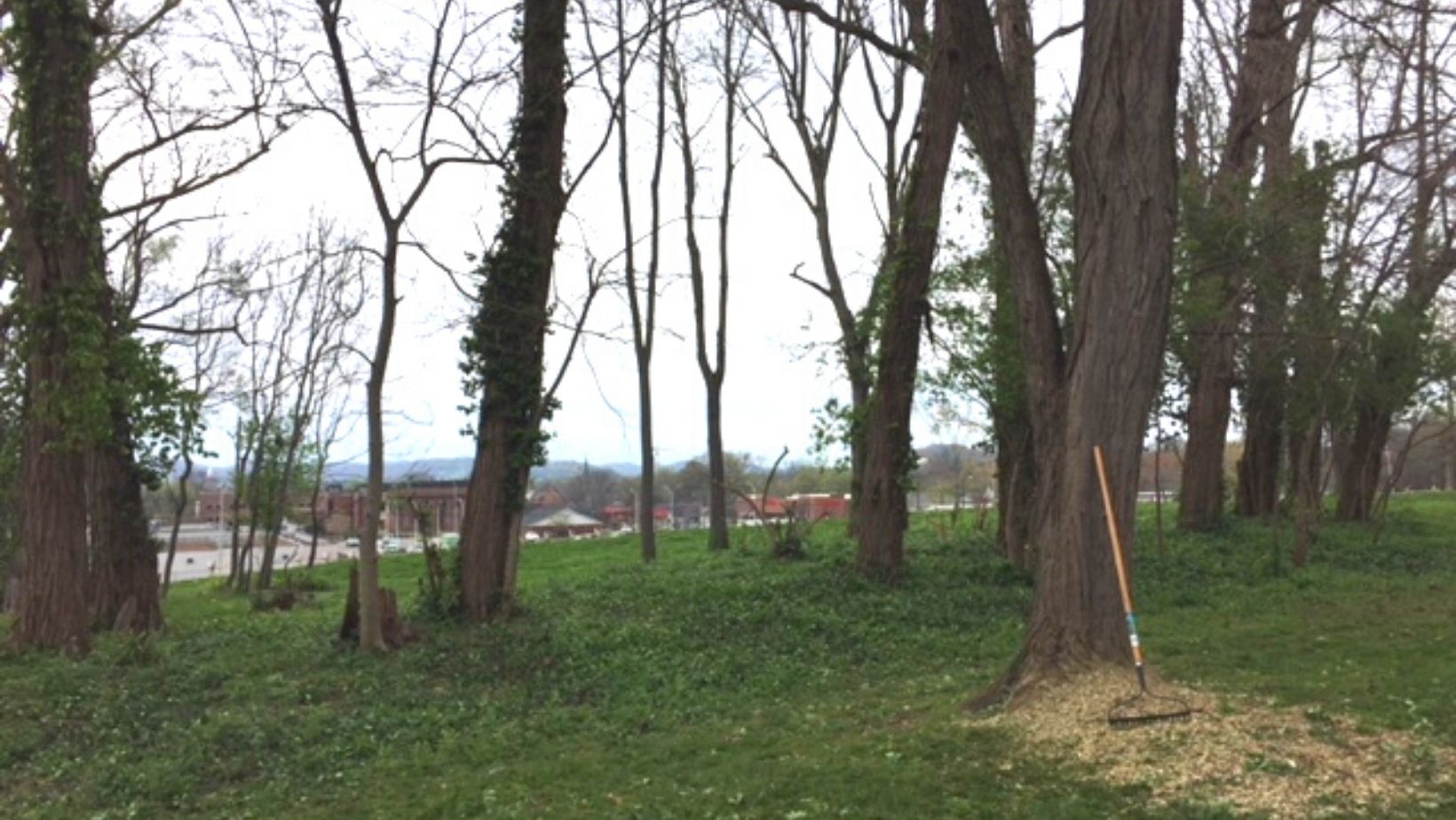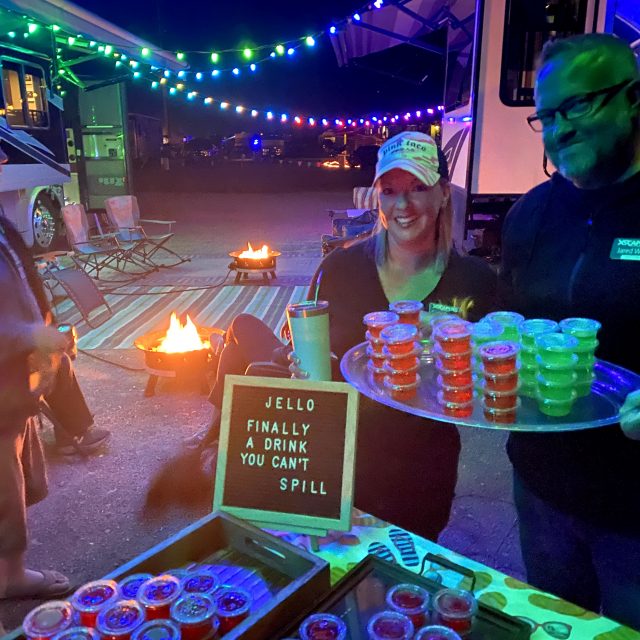3 Key Tips for Finding Free Adventures
This article originally appeared in the January/February 2020 issue of Escapees magazine.

RV Travel allows you to see and do things you might not otherwise get to see and do. However, after paying for gas and campground fees, you might find you don’t have a lot of extra money to spend on fun. Don’t fret, because if you know where to look, you can find no-cost adventures everywhere you travel. Here are tips to get you started.
Tip #1 Look for Free Hours or Free Days at Museums & Parks
One of the easiest ways to find free adventures in most any city is by looking for the free ours or days at local museums, parks. Some museums are simply free. All the time. But, those can be few and far between. However, many fee-based museums stay open late one day a week and open their doors free of charge during those extra hours. Other museums might offer free admission on one weekend day per month.
The Palm Springs Art Museum, in Palm Springs, California, for example, is free every Thursday, from 4:00 to 8:00 p.m., as well as the second Sunday of every month. As an added bonus, Thursday’s free admission complements VillageFest, only a block away, which runs from 7:00 to 10:00 p.m. When stores stay open late, the street is closed to vehicular traffic while vendors and entertainment line the street. All free.
Free days are not exclusive to museums. On a recent trip to Washington State, I learned a Discover Pass (basically, a parking pass) is needed to enter any park or recreation land managed by Washington State’s Park and Recreation, Fish and Wildlife or Department of Natural Resources. It’s $10 for a one-day pass (or $30 for an annual pass). But, 12 days each year, the fee is waived. If your trip falls on one of the free days, you can visit a lighthouse, have a picnic, spend the day on a lake or any number of other fun things at no charge.
Tip #2 Look for Self-Guided Walking Tours & Free Guided Walking Tours
Walking tours are a great way to take in an area or exhibit. You’ll find them in museums, nature centers, associated with outside art walks, downtown areas, nature preserves, interpretive hikes and more.
A self-guided walk is ideal for a family, for a person who likes to linger and, if it’s outside, for someone who prefers to walk with their dog. Instruction for your self-guided walk can be found online as an app for your phone, but don’t forget the good old-fashioned paper maps.
In Walla Walla, Washington, I found a self-guided walk called the Historical Homes Trail Guide. The two-mile route started on the edge of downtown, then it took me (and my dog) through a neighborhood where I could read the stories of various houses from the brochure. Following the brochure’s instructions felt like a treasure hunt as I searched for the next point of interest on the tour. “Turn right and note the 1894 house with wraparound porch.”
An interpretive hike is likely to have you stop and notice particular trees, flowers and rocks, as well as animals, bugs and birds. At the Lady Bird Johnson interpretive trail in Fredericksburg, Texas, they created a bird blind on their interpretive trail, complete with a bird feeding station maintained by volunteers to ensure visitors see many birds.
Nature preserves, botanical gardens, historical downtowns and many others offer free guided walks. These are generally scheduled tours so you’ll have to plan ahead and expect to go with a group. Guides, often volunteers, offer a wealth of knowledge and can provide a lot of education on your walk.
On a guided walk in historic downtown Auburn, California, for example, our guide showed us where a particular scene of the movie Phenomenon, with John Travolta, was filmed. In the middle of the road, secured into the blacktop, is a tiny plaque indicating where he fell in the street in the movie. Because it’s in the middle of the road where cars drive, without the guide none of us would’ve even known it was there. At a nature preserve, in California’s Coachella Valley, called Thousand Palms, the volunteer naturalist told us about the history and geology of the area and explained the flora and fauna.
Tip #3 Look for Volunteer Opportunities in Exchange for Admission

You can also find free adventures when you’re willing to volunteer your time and/or skills!
Volunteering assignments can range from physical labor to the staffing of an event, from stuffing envelopes to restocking shelves. Many places have one-time volunteer opportunities. You don’t need to be a local resident or a long-term volunteer to make a difference or to reap a reward for your work.
During a four-week trip to Franklin, Tennessee, I wanted to visit two different historic houses that played a significant role in the Civil War’s Battle of Franklin. But I struggled to justify paying an entry fee two times over when the houses were less than two miles apart from each other, knowing the tours would tell a similar, if not the exact same, battle story.
While looking at the Carter House’s website, I discovered they needed volunteers to help clear brush between the main house and the visitors’ center. In exchange for participating in their annual volunteer Park Day, they offered a ticket to visit the Carter House for a tour at any time in the future with no restrictions. It’s a win-win situation. They got free labor, and I got a free ticket, plus the opportunity to interact with others from the community. And the bonus was I felt good about donating my time to a worthy nonprofit.
How to Find More Free Adventures
A company’s website is a great place to start your search for no-cost adventures. But the trick is to dig deeper than just the home page. Always look at both the calendar of events and events pages because sometimes the good stuff gets buried. Be sure to get on their mailing list before your trip to learn about deals, special happenings and events. You can always unsubscribe when you leave the area.
When you get to your destination, no matter how much research you’ve done ahead of time, stop in at the visitors’ center if they have one. Stock up on brochures and promotional publications about the area. Visitors’ centers are staffed by local residents who are a wealth of information, especially on things not in the brochures including how and where to find freebies. If you are in a location that doesn’t have a visitors’ center, ask your campground host. Campgrounds with an office will often have an area for brochures.
The reason for collecting brochures and talking to locals is that not every fun place to visit has a website. I know it can be hard to believe but it’s true. In fact, the self-guided historical walk in Walla Walla I learned about from a brochure at the RV park office. I’d done a lot of online research before arriving and didn’t see it mentioned anywhere.
Whether you are in an area for a quick visit or staying long enough to get to know it well, you can find plenty of free fun things to do. The biggest tip to finding no-cost adventures is to do your homework. There are some real gems out there for those who are looking.
Did you like this post? Pin it on Pinterest!

Author
Debbie Lafleiche | SKP #138307
Debbie is a full-time RVer, traveling in her 2017 Oliver Travel Trailer. She blogs about RV tips, tricks, how-tos, hacks, life on the road, as well as her adventures online at SupersizeLIFE.com.


 Previous Post
Previous Post Next Post
Next Post